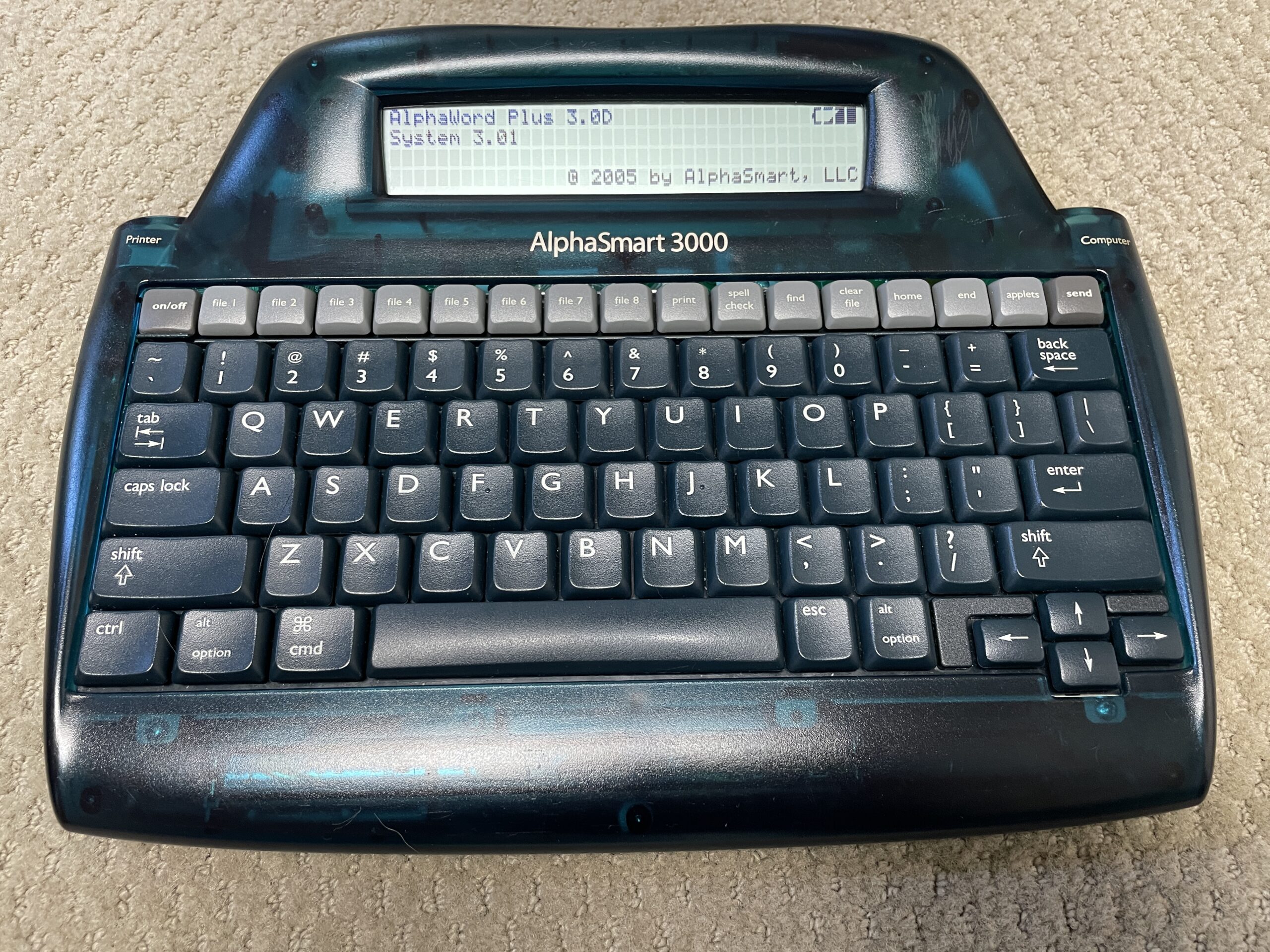I recently acquired an AlphaSmart 3000, a brutally simple word processor from the early 2000s. These have surged in popularity in recent years as a distraction-free writing platform, and now that I’ve tried one I’m completely sold on the concept. I won’t repeat all the praise that’s been lavished on these odd little devices (here are some examples), except to concur. If you’re a writer, you should really give one of these a try.
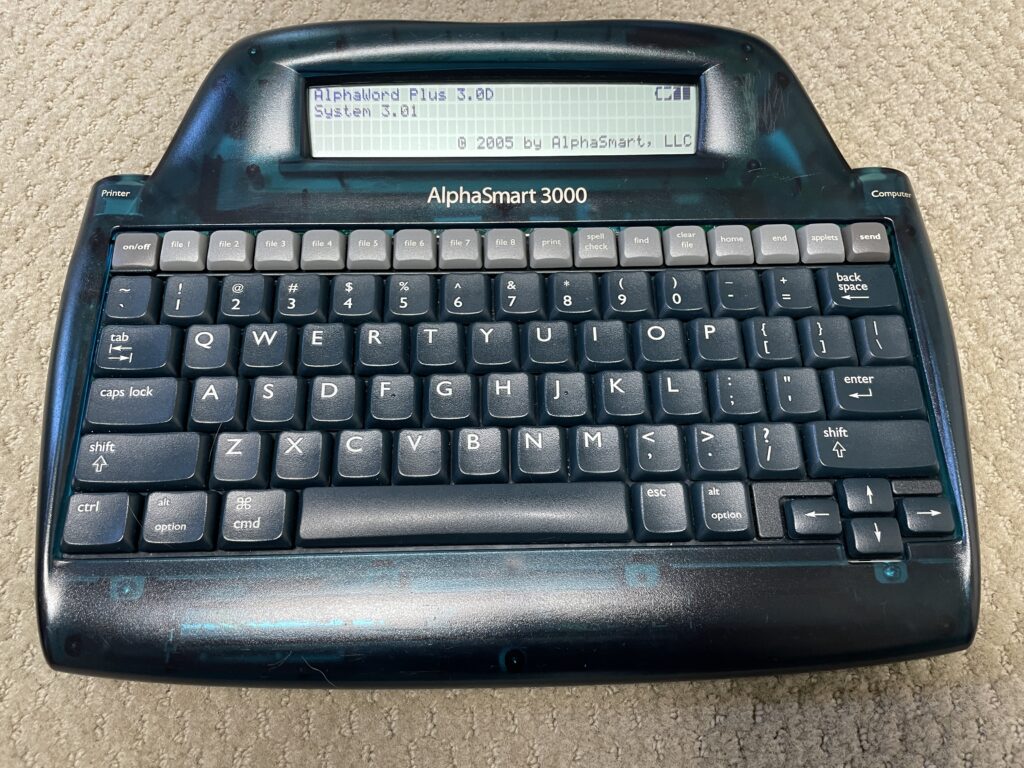
There are some drawbacks, though. The biggest is that AlphaSmart folded years ago, and these machines are now only available used. Because they were marketed primarily to schools, surviving units have often been abused, and of course there’s no official support from the defunct manufacturer. Most of the time, those aren’t major problems, because these are also incredibly durable devices. They have no moving parts, not much of an operating system, and precious few failure modes.
Mine, however, had a couple of serious issues. First, it had one of the older firmware releases that lacked a word count feature. For most of my writing, that’s critical. Second, there was a peculiar limitation on the file sizes. Published specifications say that each of the eight “file” slots on this model should hold several thousand words, but mine would only hold about 850 before popping up a message that that slot was full. I suspected that the school district that had originally owned this unit had changed a setting in it somewhere.
I was pretty sure that updating the firmware and settings could fix both issues. Unfortunately, the only way to do that is with a proprietary application that runs on Windows XP.
The solution was something I’d heard a lot about but hadn’t tried: virtualization. With a bit of tinkering, I managed to set up a virtual Windows XP system inside my Linux desktop environment, install a copy of the AlphaSmart Manager software on it, and update my little keyboard. Here’s what it entailed.
This page (archived version) gives a brief description of the process, and includes a useful link to download the final version of AlphaSmart Manager. I tried bypassing the first step by running the application with Wine on my Linux desktop, but couldn’t get it to recognize my AlphaSmart on the USB port. I then went ahead and installed VirtualBox, and started figuring out how to use it.
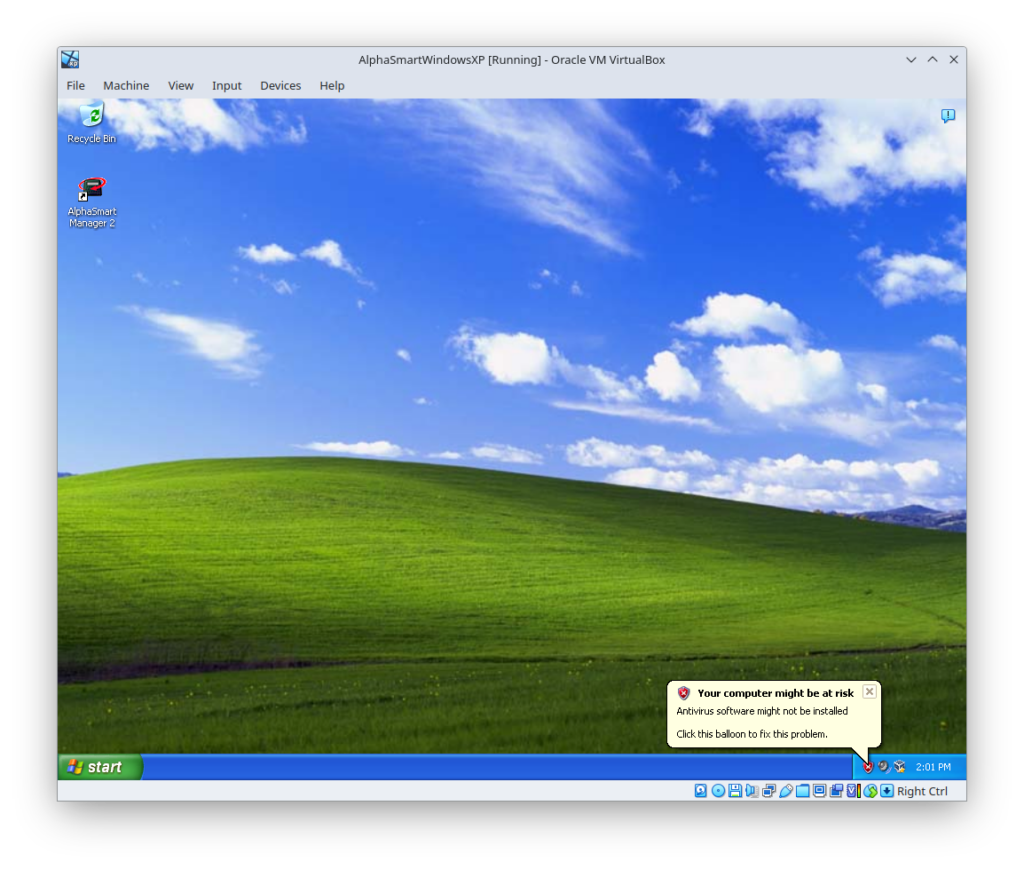
The VirtualBox documentation is quite good. After downloading a Windows XP CD-ROM ISO, which was easy to find online, I spun up a virtual PC on my desktop, then installed Windows XP on it. One non-obvious bit of tinkering on Linux was to add myself to the “vboxusers” group, in order to allow the virtual Windows machine to access my USB ports. That’s as easy as opening a terminal window and typing:
sudo adduser <your-username> vboxusersIt’s also important to enable “Guest” services in VirtualBox (in its argot, the virtual PC is a “guest” on my “host” system), and turn on clipboard and filesystem sharing bidirectionally between the host and guest. That allowed me to access the downloaded copy of AlphaSmart Manager on my desktop from the virtual PC.
Once it was all working, the AlphaSmart Manager installer I’d downloaded ran as expected on the virtual PC. I did have to manually re-enable the USB port by right-clicking on it in the bottom Windows task bar, each time I connected the AlphaSmart.
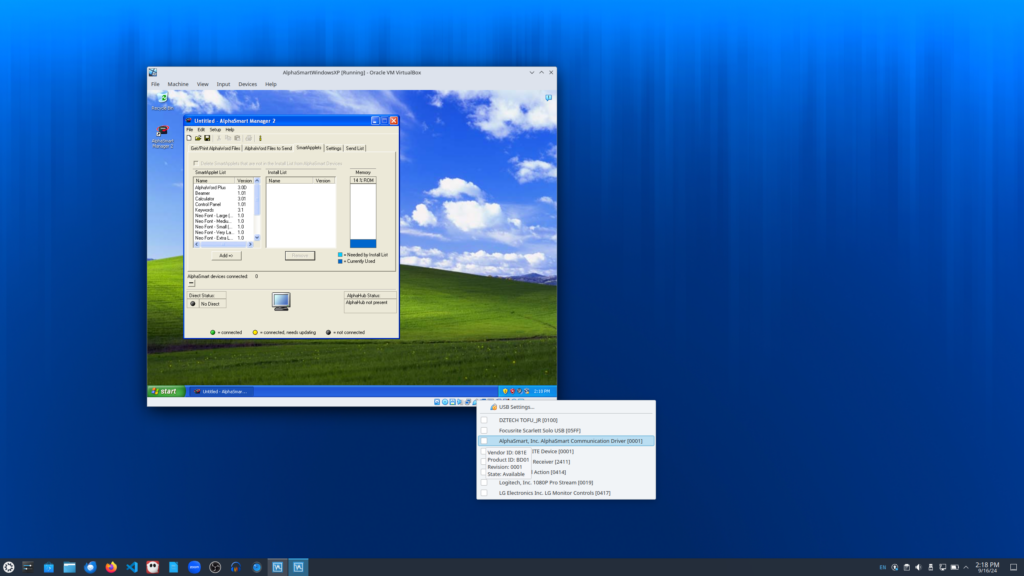
Updating the AlphaSmart took a few tries, but eventually I figured out the right boxes to check and got the new system loaded. I also deleted the quiz applet that had been on it previously, and updated the AlphaWord word processor (the primary application) to the final version.
In the settings pane of AlphaSmart Manager, I found an option to set the minimum and maximum sizes of the device’s files. The defaults were set to what looked like reasonable numbers, and sure enough, after updating everything and transferring those settings, my AlphaSmart 3000 now accepts several thousand words of text in each file.
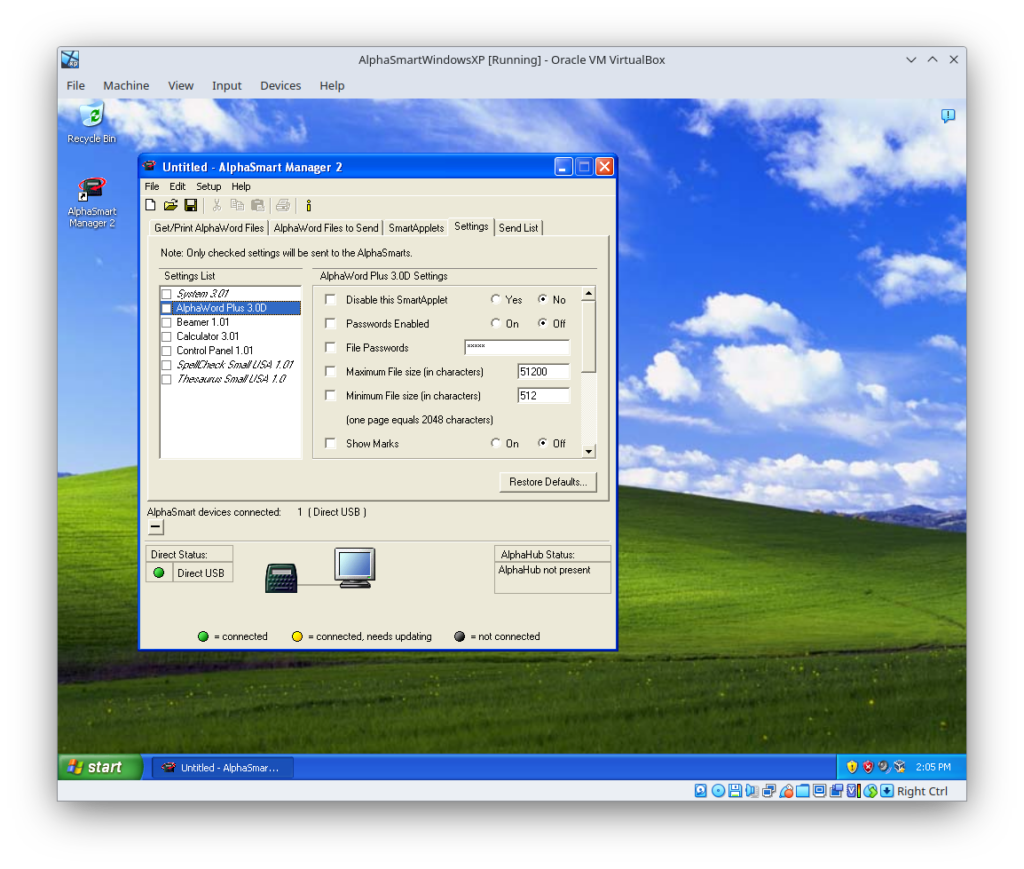
While I had the device connected to AlphaSmart Manager, I pasted some lorem ipsum into a text file and uploaded it to one of the files, just to confirm that the files were indeed larger. It worked. In theory, I should be able to transfer text the other way, too, which might be faster than the AlphaSmart’s standard method. Starting up the VM and then moving the transferred file from there to my desktop would erode most of the advantage, though, so I’ll probably just stick to the usual approach.
Besides fixing the short file size, the update also gave me the essential word count feature (which the video I just linked incorrectly says doesn’t exist on the 3000). Ctrl-W brings up a summary with word and character counts, and scrolling through that reveals a whole bunch of additional statistics.
Now that my AlphaSmart 3000 is up to date, what do I plan to do with it? For starters, I wrote this blog post on it. I’m also considering tricking it out with a new keyboard. Fans of these devices often complain about the standard AlphaSmart 3000 keyboard, and I can see their point. It’s not awful, but it’s definitely not great.
I also picked up an AlphaSmart Neo2, the final model of the series. That one came with the final system version already installed. It’s a more polished device, with a much nicer keyboard and a brighter LCD. It was also more expensive than the 3000, as the Neo2 is the model most people want these days. That said, I plan to keep using both. The 3000 is a bit chunkier, with its weight under the keyboard. That makes it more stable than the Neo2 when I’m typing on my lap. The Neo2’s smooth keyboard feel and nicer screen, though, are very pleasant to use on a sturdy surface. I’ll probably prefer the 3000 for outdoor use too, as it’s cheaper to replace.
Being able to run a Windows XP VM on my desktop could also be handy for other retro-technology projects. It’s certainly not an environment I’d want to spend much time using, but for running otherwise obsolete software it’s excellent. Having rescued one piece of would-be e-waste with it, I’m looking forward to salvaging some others now.

